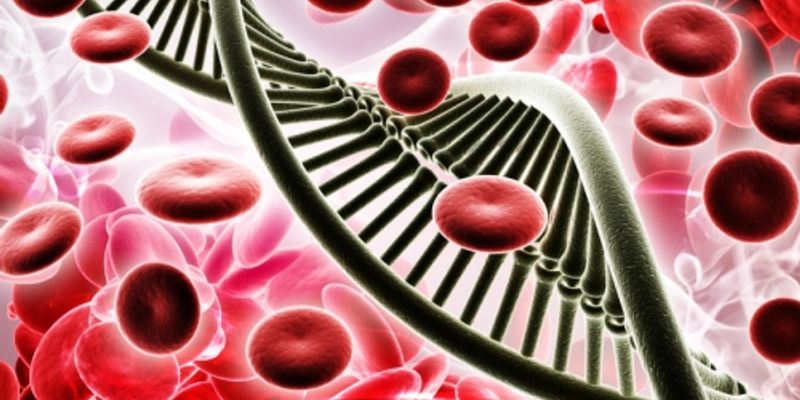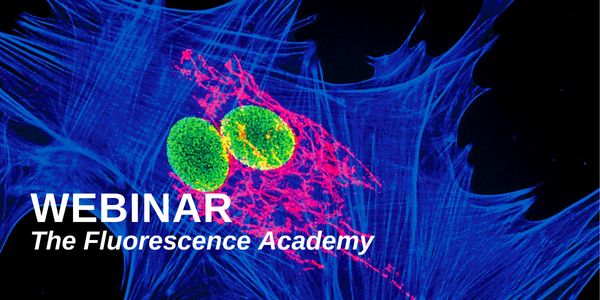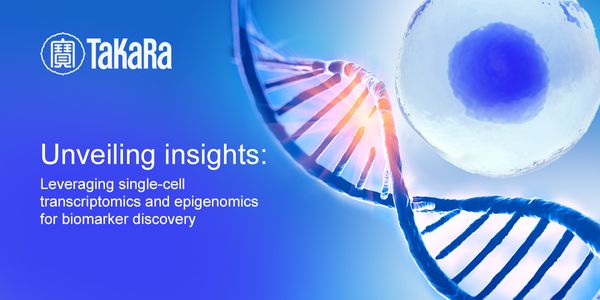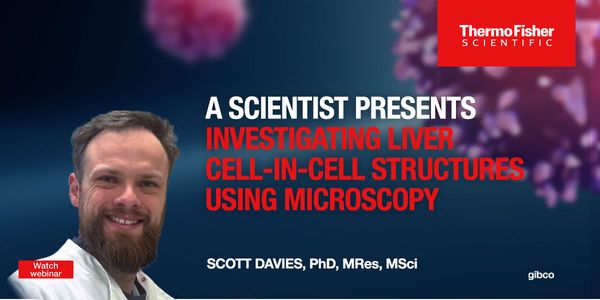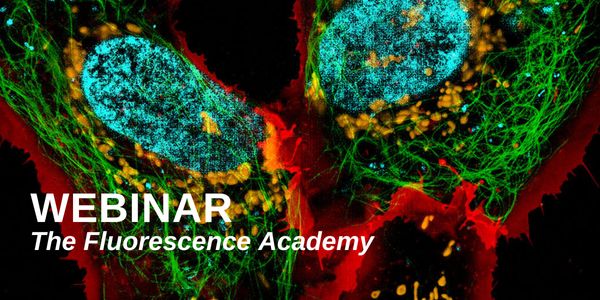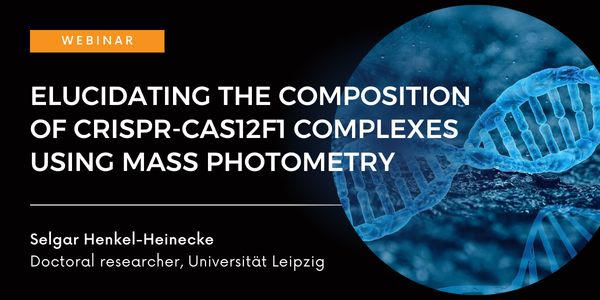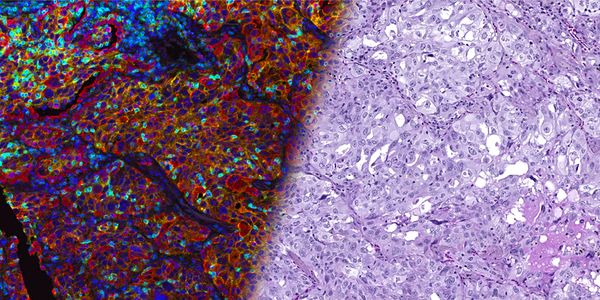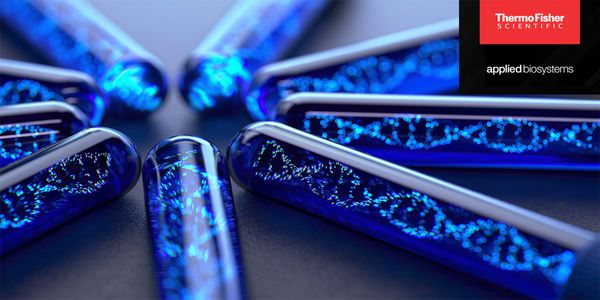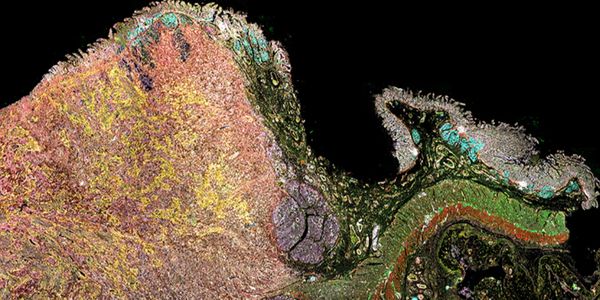Cellular Mechanism
Cellular Mechanism: is an abstraction of an electrophysiological mechanism present on a cell. The three main types are Channel Mechanism, Synaptic Mechanism and Ion Concentration.
-
MAR 27, 2024 | 9:00 AMJoin Dr. Emily Hodges, assistant professor of biochemistry at Vanderbilt University, to learn more about how the Hodges Lab is utilizing the 6-base genome to investigate the dynamics of enha...JAN 23, 2024 | 10:00 AMOrganoid technologies are increasingly being used as in vitro models of human development and disease because they exhibit morphogenetic, structural and functional properties that recapitula...Speaker: Kalpana BarnesNOV 30, 2023 | 8:00 AMPlease join us for a new webinar where we will discuss intravenous (IV) in-line filtration This comprehensive webinar will take you from key concepts to routine use. Lifesaving intravenous d...OCT 24, 2023 | 8:00 AMOrganoids are three-dimensional (3D) multi-cellular, microtissues derived from stem cells that closely mimic the complex structure and functionality of human organs. They offer more accurate...OCT 24, 2023 | 10:00 AMOrganoids are three-dimensional (3D) multi-cellular, microtissues derived from stem cells that closely mimic the complex structure and functionality of human organs. They offer more accurate...SEP 13, 2023 | 9:00 AMCRISPR-based forward genetic screens can be used to identify essential genes in proliferating human cell lines. Although environmental factors also influence gene essentiality, most CRISPR-b...AUG 01, 2023 | 10:00 PMC.E. CREDITSStem cells have the capability to develop into any specialized cell type, which makes them a valuable resource in research and regenerative medicine. Differentiated stem cell models provide...JUL 20, 2023 | 8:00 AMSingle-cell ATAC-seq (Assay for Transposase-Accessible Chromatin using sequencing, scATAC-seq) is a relatively new and powerful technique that allows researchers to identify open chromatin r...JUN 06, 2023 | 9:00 AMC.E. CREDITSTransmission electron microscopy reveals the architecture of cells at nanometer resolution, but chemical fixation severely warps their native structure. The true ultrastructure of cells can...MAY 31, 2023 | 11:00 AMDate: May 31, 2023 Time: 11:00am (PDT), 2:00pm (EDT), 8:00pm (CET) Single-cell genomics has facilitated the understanding of mechanisms involved in various biological processes such as tumor...MAY 16, 2023 | 8:00 AMThe therapeutic use of chimeric antigen receptor T cells has achieved significant success in the treatment of B cells malignancies. Despite promising results in mouse tumor models, a similar...MAY 09, 2023 | 1:00 PMC.E. CREDITSDate: May 09, 2023 Time: 5:00am (PDT), 8:00pm (EDT), 2:00pm (CEST) Advances in high content imaging (HCI) have improved the use of cell culture to make a large number of comparisons within i...APR 05, 2023 | 1:00 PMC.E. CREDITSDate: April 04, 2023 Time: 10:00pm (PDT), Date: April 05, 2023 Time: 2:00am (EDT), 7:00am (CEST), 1:00pm (SGT) This seminar provides an overview of fluorescence microscopy in cancer research...We have developed 3D-shaped hydrogel microparticle platforms to capture cells, as well as isolate and label their secretions. These “lab on a particle” systems enable sorting cel...
FEB 15, 2023 | 7:00 AM
Date: February 15, 2023 Time: 7:00am (PST), 10:00pm (EST), 4:00pm (CET) While not all microscopy samples can fluoresce, all can scatter light, and this scattered light can be imaged. This ha...
Speaker:
Philipp Kukura
, Francesco Reina
, Matthew Kose-Dunn
, Phil Allen
Sponsored By: Teledyne Photometrics
JAN 18, 2023 | 9:00 AM
Date: January 18, 2023 Time: 9:00am (PST), 12:00pm (EST), 6:00pm (CET) CRISPR-Cas systems are widely used in genome engineering applications. They contain RNA-guided ribonucleoprotein (RNP)...
Date: November 01, 2022 Time: 7:00am (PDT), 10:00am (EDT), 3:00pm (CET) Molecular imaging of living specimens offers a means to draw upon the growing body of high-throughput molecular data t...
OCT 26, 2022 | 8:00 AM
Date: October 26, 2022 Time: 8:00am (PDT), 11:00am (EDT), 5:00pm (CEST) Immunotherapy has transformed the treatment of metastatic and recurrent solid tumors. Advances in technology in the pa...
OCT 11, 2022 | 8:00 AM
Date: October 11, 2022 Time: 8:00am (PDT), 11:00pm (EDT), 5:00pm (CEST) Multiomic profiling of cell populations at single-cell resolution is revolutionizing scientists’ understanding o...
OCT 06, 2022 | 5:00 PM
Genetic biomarkers have become increasingly important for disease prediction, early disease detection and progression, and options for intervention. Tumor biopsies are commonly used as sourc...
OCT 05, 2022 | 7:00 AM
Date: October 05, 2022 Time: 7:00am (PDT), 10:00am (EDT), 4:00pm (CEST) Cancer is a complex disease at the level of both cells and tissues, and uncovering novel treatments requires understan...
SEP 15, 2022 | 9:00 AM
Date: September 15, 2022 Time: 9:00am (PDT), 12:00pm (EDT), 6:00pm (CEST) Tyrosine kinases, a ubiquitous and diverse family of enzymes, are of considerable clinical interest because they dir...
AUG 24, 2022 | 7:00 AM
Date: August 24, 2022 Time: 7:00am (PDT), 10:00pm (EDT), 4:00pm (CEST) Light field microscopy was first introduced in 2006, and allows users to capture the 4D light field within the microsco...
Speaker:
Matthew Kose-Dunn
, Phil Allen
, Liang Gao
, Shu Jia
Sponsored By: Teledyne Photometrics
JUL 19, 2022 | 8:00 AM
Date: July 19, 2022 Time: 8:00am (PDT), 11:00am (EDT), 5:00pm (CEST) Cryo-EM is rapidly becoming the method of choice for structural biologists and biochemists around the world, helping thes...
Speaker:
Melissa Chambers
, Natalia de Val
Presented at: Thermo Fisher Scientific - Electron Microscopy Webinars
Sponsored By: Thermo Fisher Scientific
Sponsored By: Thermo Fisher Scientific
MAR 27, 2024 | 9:00 AM
Join Dr. Emily Hodges, assistant professor of biochemistry at Vanderbilt University, to learn more about how the Hodges Lab is utilizing the 6-base genome to investigate the dynamics of enha...
JAN 23, 2024 | 10:00 AM
Organoid technologies are increasingly being used as in vitro models of human development and disease because they exhibit morphogenetic, structural and functional properties that recapitula...
Speaker:
Kalpana Barnes
NOV 30, 2023 | 8:00 AM
Please join us for a new webinar where we will discuss intravenous (IV) in-line filtration This comprehensive webinar will take you from key concepts to routine use. Lifesaving intravenous d...
OCT 24, 2023 | 8:00 AM
Organoids are three-dimensional (3D) multi-cellular, microtissues derived from stem cells that closely mimic the complex structure and functionality of human organs. They offer more accurate...
OCT 24, 2023 | 10:00 AM
Organoids are three-dimensional (3D) multi-cellular, microtissues derived from stem cells that closely mimic the complex structure and functionality of human organs. They offer more accurate...
SEP 13, 2023 | 9:00 AM
CRISPR-based forward genetic screens can be used to identify essential genes in proliferating human cell lines. Although environmental factors also influence gene essentiality, most CRISPR-b...
AUG 01, 2023 | 10:00 PM
C.E. CREDITS
Stem cells have the capability to develop into any specialized cell type, which makes them a valuable resource in research and regenerative medicine. Differentiated stem cell models provide...
JUL 20, 2023 | 8:00 AM
Single-cell ATAC-seq (Assay for Transposase-Accessible Chromatin using sequencing, scATAC-seq) is a relatively new and powerful technique that allows researchers to identify open chromatin r...
JUN 06, 2023 | 9:00 AM
C.E. CREDITS
Transmission electron microscopy reveals the architecture of cells at nanometer resolution, but chemical fixation severely warps their native structure. The true ultrastructure of cells can...
MAY 31, 2023 | 11:00 AM
Date: May 31, 2023 Time: 11:00am (PDT), 2:00pm (EDT), 8:00pm (CET) Single-cell genomics has facilitated the understanding of mechanisms involved in various biological processes such as tumor...
MAY 16, 2023 | 8:00 AM
The therapeutic use of chimeric antigen receptor T cells has achieved significant success in the treatment of B cells malignancies. Despite promising results in mouse tumor models, a similar...
MAY 09, 2023 | 1:00 PM
C.E. CREDITS
Date: May 09, 2023 Time: 5:00am (PDT), 8:00pm (EDT), 2:00pm (CEST) Advances in high content imaging (HCI) have improved the use of cell culture to make a large number of comparisons within i...
APR 05, 2023 | 1:00 PM
C.E. CREDITS
Date: April 04, 2023 Time: 10:00pm (PDT), Date: April 05, 2023 Time: 2:00am (EDT), 7:00am (CEST), 1:00pm (SGT) This seminar provides an overview of fluorescence microscopy in cancer research...
We have developed 3D-shaped hydrogel microparticle platforms to capture cells, as well as isolate and label their secretions. These “lab on a particle” systems enable sorting cel...
FEB 15, 2023 | 7:00 AM
Date: February 15, 2023 Time: 7:00am (PST), 10:00pm (EST), 4:00pm (CET) While not all microscopy samples can fluoresce, all can scatter light, and this scattered light can be imaged. This ha...
Speaker:
Philipp Kukura
, Francesco Reina
, Matthew Kose-Dunn
, Phil Allen
Sponsored By: Teledyne Photometrics
JAN 18, 2023 | 9:00 AM
Date: January 18, 2023 Time: 9:00am (PST), 12:00pm (EST), 6:00pm (CET) CRISPR-Cas systems are widely used in genome engineering applications. They contain RNA-guided ribonucleoprotein (RNP)...
Date: November 01, 2022 Time: 7:00am (PDT), 10:00am (EDT), 3:00pm (CET) Molecular imaging of living specimens offers a means to draw upon the growing body of high-throughput molecular data t...
OCT 26, 2022 | 8:00 AM
Date: October 26, 2022 Time: 8:00am (PDT), 11:00am (EDT), 5:00pm (CEST) Immunotherapy has transformed the treatment of metastatic and recurrent solid tumors. Advances in technology in the pa...
OCT 11, 2022 | 8:00 AM
Date: October 11, 2022 Time: 8:00am (PDT), 11:00pm (EDT), 5:00pm (CEST) Multiomic profiling of cell populations at single-cell resolution is revolutionizing scientists’ understanding o...
OCT 06, 2022 | 5:00 PM
Genetic biomarkers have become increasingly important for disease prediction, early disease detection and progression, and options for intervention. Tumor biopsies are commonly used as sourc...
OCT 05, 2022 | 7:00 AM
Date: October 05, 2022 Time: 7:00am (PDT), 10:00am (EDT), 4:00pm (CEST) Cancer is a complex disease at the level of both cells and tissues, and uncovering novel treatments requires understan...
SEP 15, 2022 | 9:00 AM
Date: September 15, 2022 Time: 9:00am (PDT), 12:00pm (EDT), 6:00pm (CEST) Tyrosine kinases, a ubiquitous and diverse family of enzymes, are of considerable clinical interest because they dir...
AUG 24, 2022 | 7:00 AM
Date: August 24, 2022 Time: 7:00am (PDT), 10:00pm (EDT), 4:00pm (CEST) Light field microscopy was first introduced in 2006, and allows users to capture the 4D light field within the microsco...
Speaker:
Matthew Kose-Dunn
, Phil Allen
, Liang Gao
, Shu Jia
Sponsored By: Teledyne Photometrics
JUL 19, 2022 | 8:00 AM
Date: July 19, 2022 Time: 8:00am (PDT), 11:00am (EDT), 5:00pm (CEST) Cryo-EM is rapidly becoming the method of choice for structural biologists and biochemists around the world, helping thes...
Speaker:
Melissa Chambers
, Natalia de Val
Presented at: Thermo Fisher Scientific - Electron Microscopy Webinars
Sponsored By: Thermo Fisher Scientific
Sponsored By: Thermo Fisher Scientific
